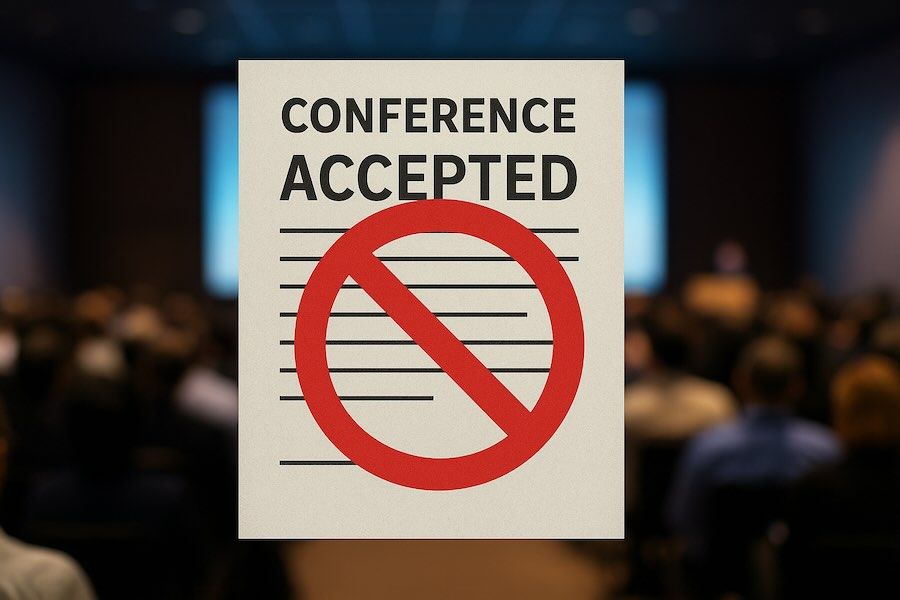When Acceptance Isn’t Enough: NeurIPS 2025 rejects 400 accepted papers due to venue crisis?
-

 A Shock to the AI Research Community
A Shock to the AI Research CommunityNeurIPS 2025, the 39th iteration of the world’s premier AI conference, finds itself embroiled in controversy. Despite preparing two venues, one in San Diego (Dec 2–7) and another in Mexico City (Nov 30–Dec 5), the conference has still rejected (according to internal information leaked) approximately 400 already accepted papers due to physical venue limitations.
A Reddit thread surfaced titled:
"[D] NeurIPS is pushing to SACs to reject already accepted papers due to venue constraints."
A single SAC anonymously disclosed:
"About 400 papers were outright rejected, despite passing both AC and reviewer approval. It's unfair. If venue space is insufficient, they should expand further — not randomly discard quality papers."
This blunt revelation marks a turning point for the community’s trust in the fairness of peer review.
 Rejection Despite Positive Reviews
Rejection Despite Positive ReviewsZeynep Akata, a SAC, tweeted in disbelief:
"This is wrong! If the review process cannot handle so many papers, the conference needs to split instead of arbitrarily rejecting 400 papers."
"We estimate that 300–400 papers recommended for acceptance by ACs will need to be rejected."
Equally shocking is this comment by Xin Eric Wang:
"I heard some NeurIPS ACs are rejecting papers with all positive reviews (5444) just to control acceptance rates, which is wrong."
This raises the ethical dilemma: What does "peer-reviewed acceptance" mean if physical space can override it?
The official NeurIPS 2025 Review Scoring Scale (from the table below) gives clear categories from Strong Accept (6) to Strong Reject (1), yet these boundaries were rendered meaningless in the face of logistical constraints.
Score Meaning 6 Strong Accept 5 Accept 4 Borderline Accept 3 Borderline Reject 2 Reject 1 Strong Reject
 Submission Tsunami: A Victim of Its Own Success
Submission Tsunami: A Victim of Its Own SuccessSubmission IDs reportedly reached 23,000 as early as July, with projections nearing 30,000.
Jiaxuan You exclaimed:
“NeurIPS 2025 might break records... One of our submission IDs is already ~23,000 — final count could hit 30,000. Absolute madness.”
This is nearly 50% more than previous years, setting off what the article calls:
“A warehouse explosion crisis is unfolding.”
 Community Backlash: “This Makes No Sense!”
Community Backlash: “This Makes No Sense!”Several top researchers called out this chaos:
-
Subbarao Kambhampati:
"Rejecting papers in AI Conferences because of ‘resource constraints’ is shooting ourselves in the foot as a community."
-
Ramchalam K:
“How can all reviewers accept but be rejected in the end. Makes no sense.”
-
Mark Schmidt:
“Getting ready to have your well-reviewed NeurIPS rejected for perplexing reasons.”
“We are doing this to ourselves!”
 Borderline Papers: The Collateral Damage
Borderline Papers: The Collateral DamageFor authors whose papers scored Borderline Accept (4) or Accept (5), this situation is especially heart-wrenching. A few reviewers reportedly used non-existent citations or LLM-generated hallucinations to justify “Strong Reject” after rebuttal — a phenomenon noted by Mehdi Ataei:
“LLM reviews citing non-existing works. It killed any prestige publishing had for me.”
Such behavior compounds the emotional toll on PhD students, early-career researchers, and underrepresented voices — often working on high-risk, high-reward topics that land right on the review borderline.
🧠 Oversupply of PhDs and Academic Arms Race
The article quotes a Redditor:
“These papers are being written by students trying to graduate. These conferences should be for sharing ideas, not gatekeeping degrees.”
In elite institutions, publishing at NeurIPS, ICLR, or ICML has become a non-negotiable credential. With >30,000 submissions at NeurIPS and >29,000 at AAAI 2026, it's a brutally competitive system funneling researchers into a narrow bottleneck.
 The Real Issue: Scaling Without Strategy
The Real Issue: Scaling Without StrategyWhile the double-venue approach (San Diego + Mexico City) seemed innovative, it wasn't enough. Suggestions from the community include:
- Splitting NeurIPS by discipline (e.g., NLP, RL, CV)
- Introducing a Findings track like ACL and TACL for solid-but-borderline papers
- Better AI-assisted reviewing pipelines, like AAAI 2026, which now includes:
- AI-generated reviews
- AI-generated summaries
- Reviewer classification (human-written vs. AI-generated)
The AAAI guideline states:
“Only the human-written reviews and summaries will be used to decide whether the paper proceeds to Phase 2.”
But how long can human bandwidth keep up?
 Tragic Efficiency: A Broken Cycle
Tragic Efficiency: A Broken CycleThe author summarizes with brutal honesty:
“Rejected papers don’t disappear; they are just resubmitted to another top conference. But the reviewers? Still the same people.”
“All of this (the time, energy, and soul invested) simply feeds a vicious loop of overburdened reviewers and undersupplied capacity.”
🧭 Call to Action: Break the Bottleneck, Rethink the System
If you're a researcher whose paper was borderline accepted, then rejected, especially on a hot sub-domain, you're not alone. Many thoughtful works have been lost in this tragedy of logistics.
Here’s something you can do now:
Try submitting your paper to https://review.cspaper.org/ — an experimental review platform that simulates conference-specific review insights on your paper. All surfaced related work are validated. It may be able to help you:
- Understand how your paper might be reviewed in a less-constrained environment
- Compare how close or divergent its judgment is versus NeurIPS reviews
- Improve your submission for future resubmission cycles
 Got Ideas?
Got Ideas?Do you have suggestions for how CSPaper or other systems can help decentralize, democratize, or de-stress the academic review process?
Drop your ideas in the comments or create a follow-up post. The system won’t change itself — we must build better ones, together.
-
